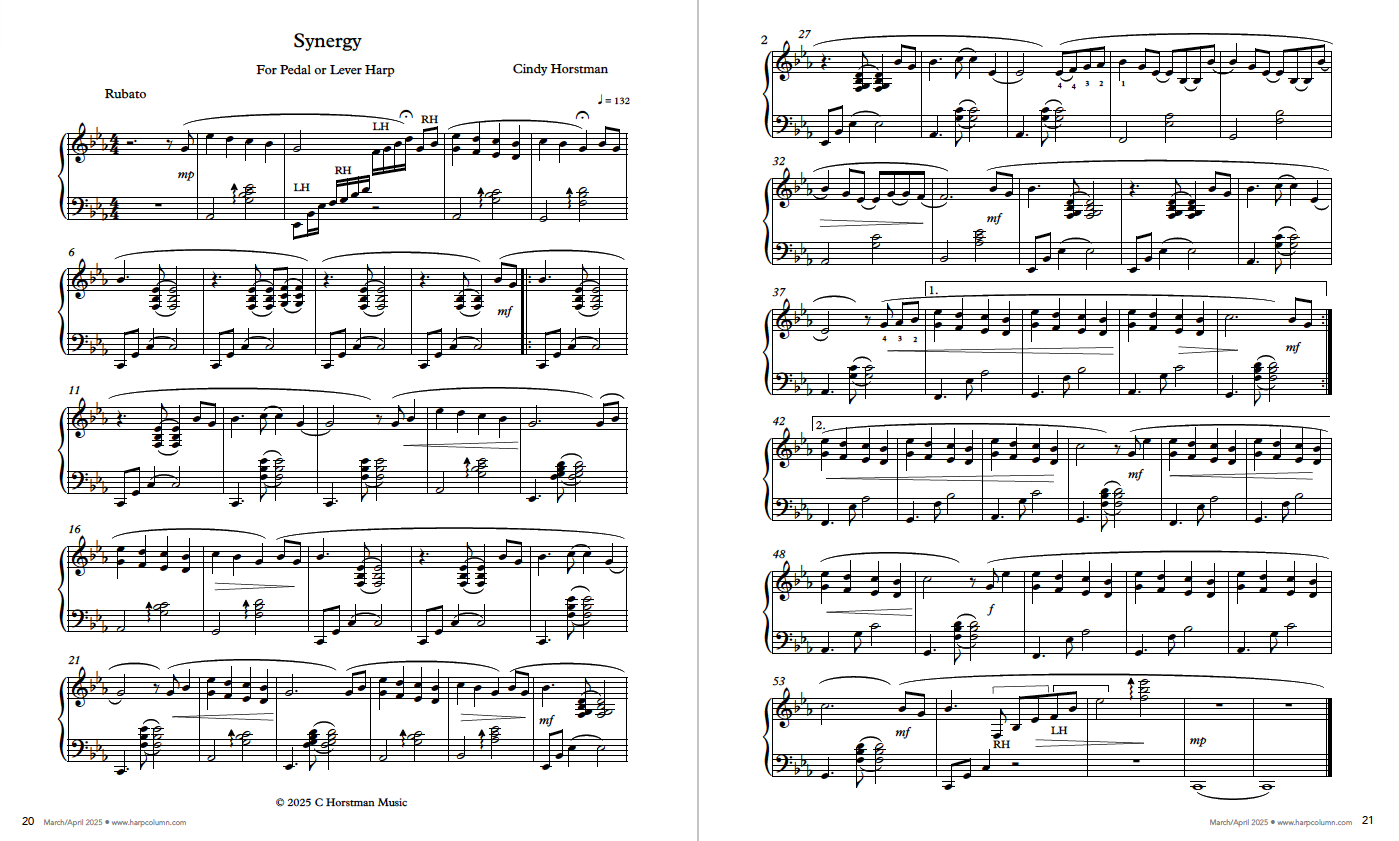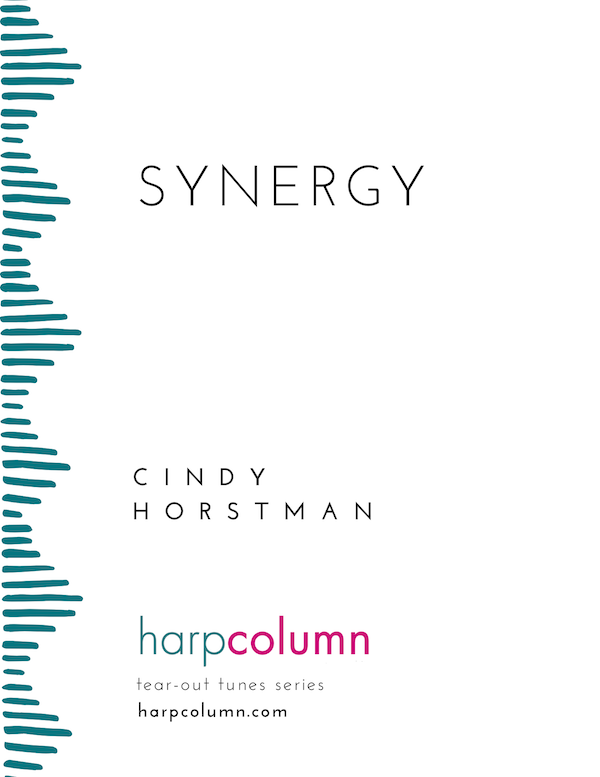
Download this issue to get this tune now!
Each installment of our Tear-Out Tunes series features a new piece written by one of the best harpist-composer-arrangers in the business. Each composer will tell you a little bit about their piece, and also give you some helpful tips for learning it and getting the most out of the experience. The new piece is yours to keep. We even put it right in the middle of the magazine so you can tear out the whole sheet and put your new tune on your music stand.
I was thrilled to be asked to write a piece for Harp Column’s Tear-Out Tune series and immediately started to think about what type of tune I wanted to create. I chose to have no pedal or lever changes and use the key signature of three flats (B-flat, E-flat, and A-flat), which is the standard tuning for most lever harpists.
With these parameters in place, I thought about having two distinct sections, but I wanted them to be musically connected in some way. The first obvious connection was to have the first section in C minor and the second section in E-flat major because they share the same key signature as relative major and minor keys.
The next step was to create the melody. I began with a short melodic idea, B-flat–G–B-flat, and started to expand this in C minor. After some experimenting, I realized that this melodic motif could be used in both C minor and E-flat major which created another musical connection. For example, if you look at measure 10 and its pickup notes, B-flat–G–B-flat, you will see that this melodic and rhythmic motif is used throughout the piece including measures 12, 18, 20, 26, 28, 34, 36, and 54. Another motif is found in measure 14, E-flat–D–C–B-flat–G. You will see this throughout the piece as well, including measures 16, 22, 24, 38, 39, 40, etc.
My next challenge was choosing interesting chords and rhythms that would support the melody in both keys. I love the sound of “quartal harmony” on the harp, because chords that are stacked in fourths instead of the traditional interval of thirds are very rich and resonant in the mid and lower range of the harp, and this can create a very emotional response for the player as well as the listener. My theory of writing accompanying chords is that the lower you go on the harp, the wider the intervals should be. You can find quartal harmonies in measures 6, 7, 8, 10, 11, 12, 13, etc.
Another aspect of playing the accompanying chords was choosing which hand to use. The melody in the right hand has many held notes, which allows it the freedom to play some of the chords. I wanted to involve both hands in the accompaniment, thus creating another musical connection. For example, the
right hand plays chords in measures 6, 7, 8, 10, 11, 27, 34, 35, etc.
The rhythms I chose are somewhat syncopated but seem to interact well between the hands. For example, in measures 30, 31, and 32, the right-hand melody plays on several upbeats while the left hand remains in half notes to emphasize beats one and three for rhythmic stability. I also wanted to mention that in the syncopated parts, I used mainly tied notes as opposed to dotted notes so you could see where the beats landed and visualize where both hands play together as well as separately.
After creating all of these connections, I did some research and found the perfect name for the tune, Synergy, which Oxford Languages defined as “The interaction or cooperation of two or more organizations, substances, or other agents to produce a combined effect greater than the sum of their separate effects.”
Tips on playing the tune
To begin, please listen to Synergy and follow along with the music. (Ed.—Listen to Horstman perform this piece on harpcolumnmusic.com.) The introduction is very rubato, and I suggest taking liberties with the rhythm and being expressive. I wrote the intro last, as I usually do in new compositions, and you can see that the melody in the first full measure is used in both sections of the piece to tie it all together. As you listen, you can identify the repeated patterns and key changes in the two sections. Also, I marked the tempo of 132 beginning on the upbeat of measure six. However, if you wish to play it slower, it will work beautifully. It might be helpful to play the hands separately with a slow metronome marking and then put your hands together measure by measure.
I hope you enjoy playing Synergy!•
Collect the whole set
Synergy by Cindy Horstman is the 14th Tear-Out Tune published in Harp Column since the series began in 2023. Magazine subscribers can access the entire series of songs in the back issue PDFs on our website, so you can make sure you have the entire set!
Coming up in 2025
We have a talented lineup of composers and arrangers for our upcoming Tear-Out Tunes in 2025, including Tamsin Dearnley, Eléonore Niubo, Alfredo Rolando Ortiz, and Park Stickney. Make sure your subscription is current so you don’t miss a beat!







